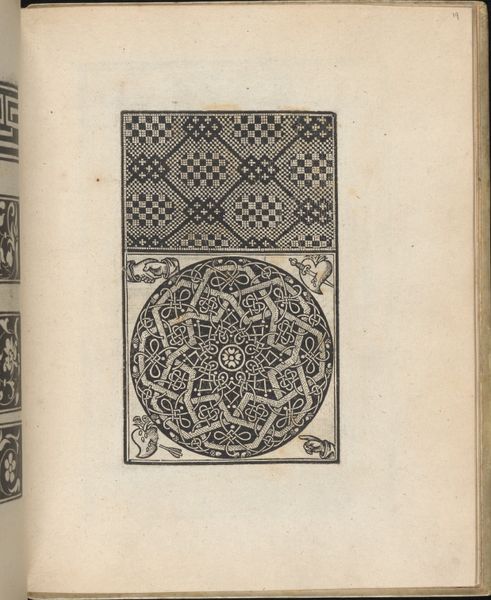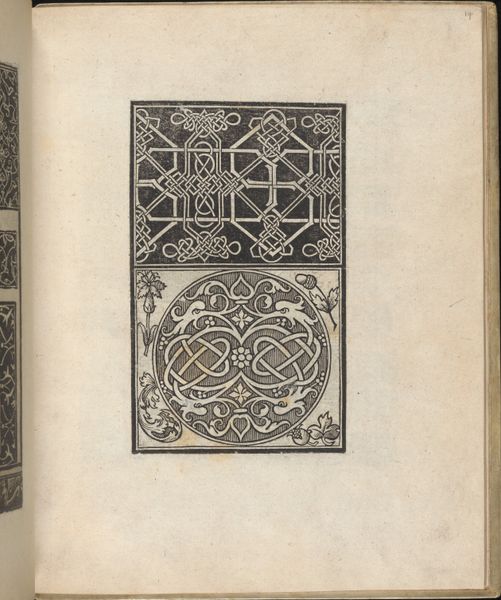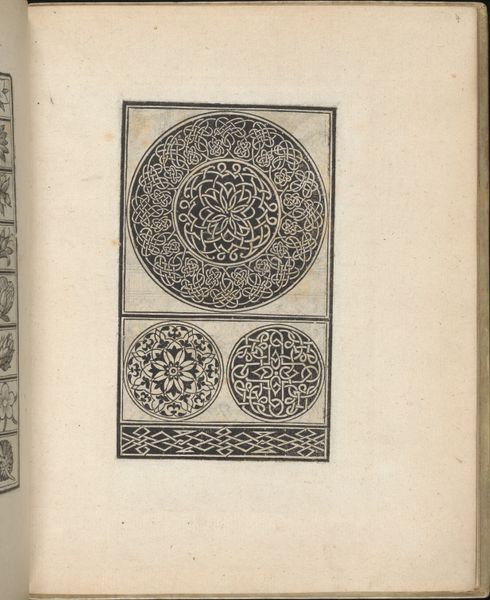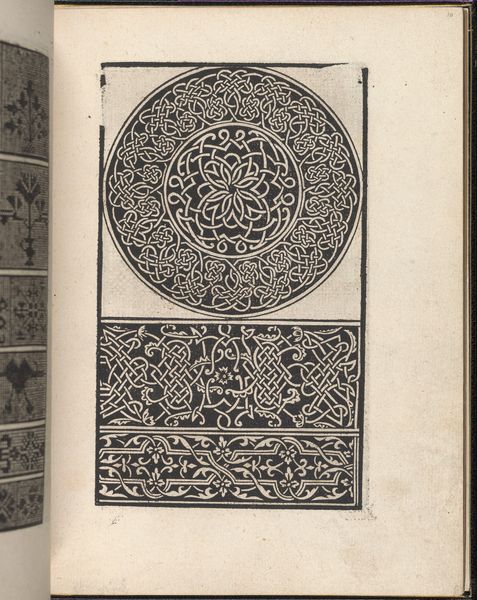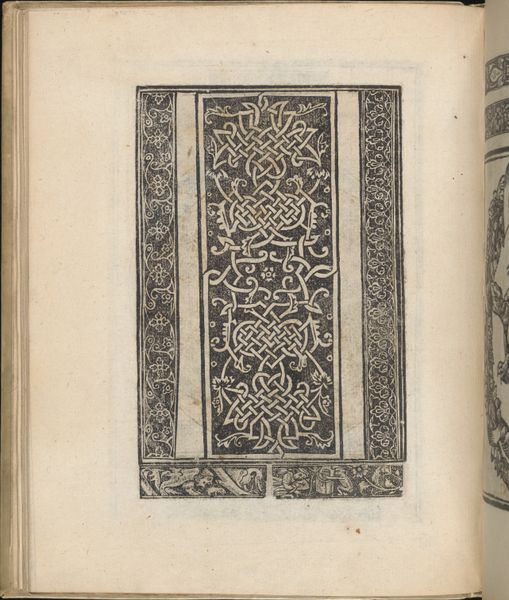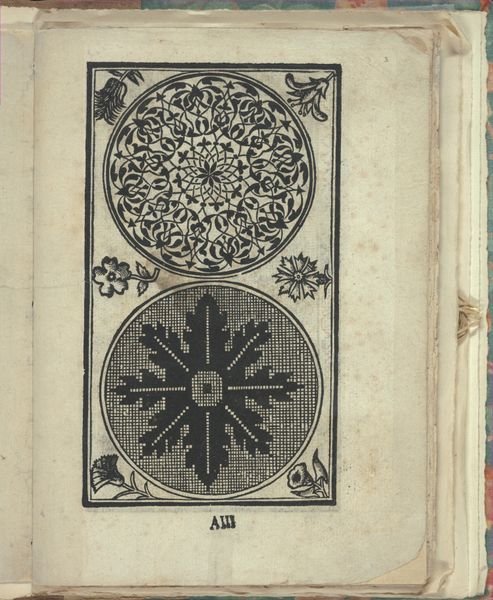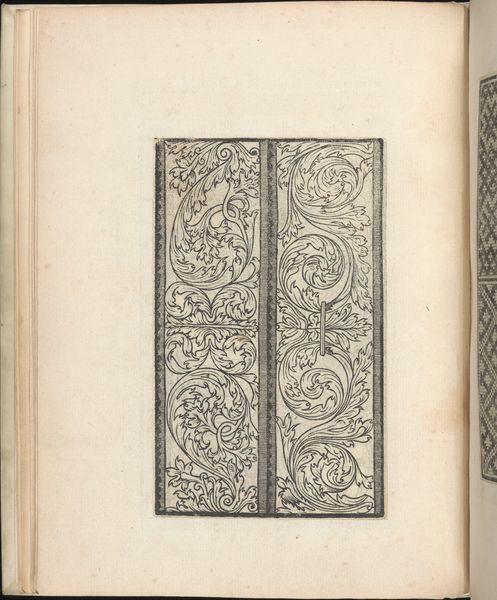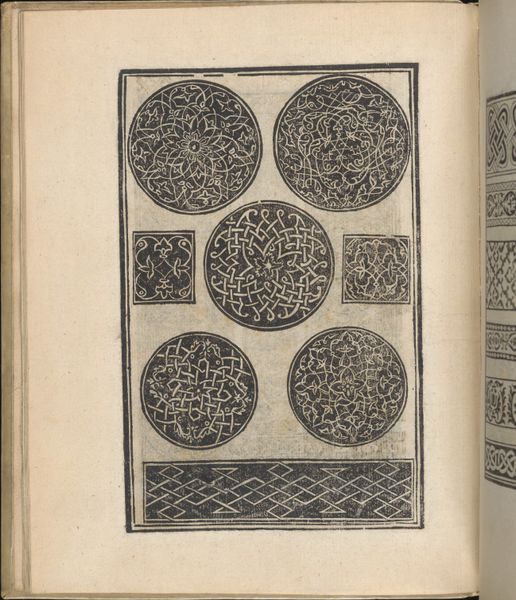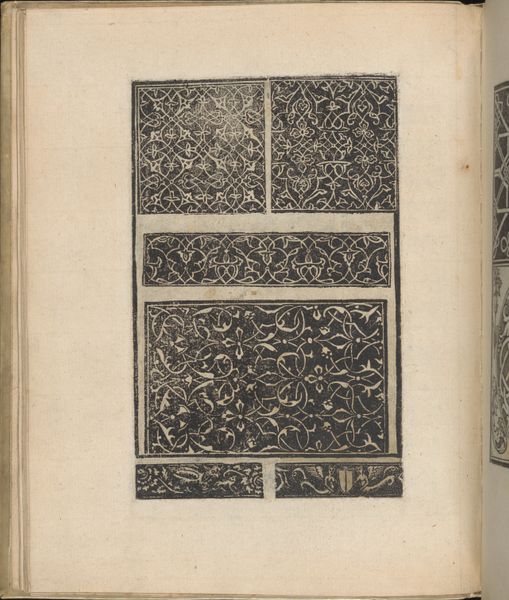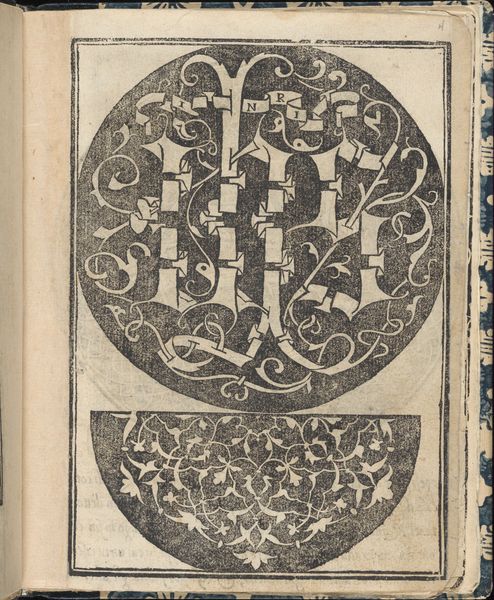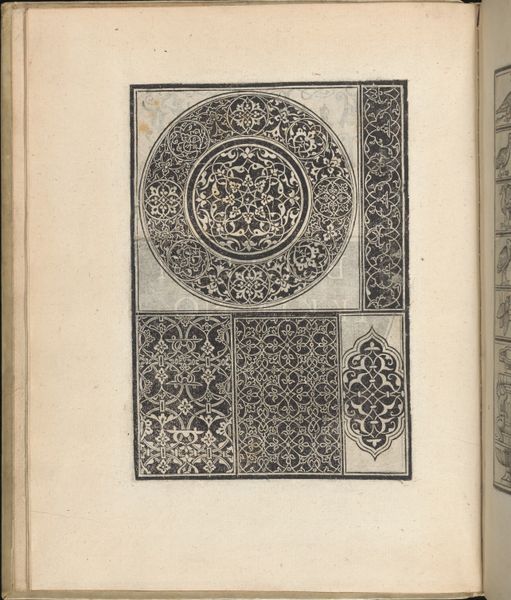
drawing, ornament, print, intaglio
#
drawing
#
ornament
# print
#
intaglio
#
11_renaissance
#
geometric
#
italian-renaissance
Dimensions: Overall: 9 13/16 x 7 7/8 in. (25 x 20 cm)
Copyright: Public Domain
This is page 20 from "Trionfo Di Virtu. Libro Novo...", made by Matteo Pagano in Venice during the 16th century. The woodcut print is one of many designs for embroidery and lace patterns in his book. Consider the historical context in which Pagano was working. Venice was a hub of trade and cultural exchange, a place where diverse aesthetic traditions met and merged. In this pattern we can see the influence of Islamic art, particularly in the intricate arabesque designs filling the circle and rectangles. What does it mean for a Christian European artist to borrow from Islamic artistic traditions? Embroidery and lacemaking were typically the work of women. These pattern books provided templates for their creative labor. Did these women see themselves as artists, craftspeople, or something else entirely? How did their work contribute to the economy and culture of Venice? As you consider these patterns, think about the labor, the skill, and the cultural exchange that went into their creation.
Comments
No comments
Be the first to comment and join the conversation on the ultimate creative platform.
